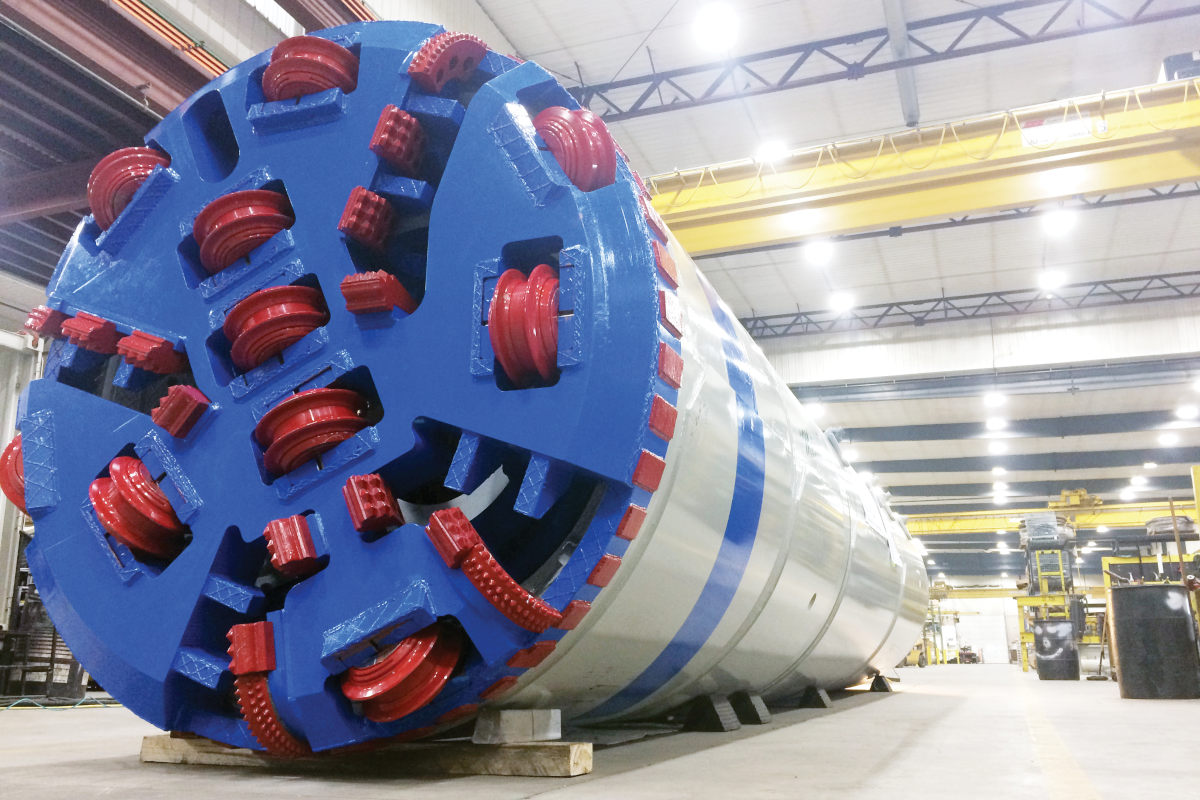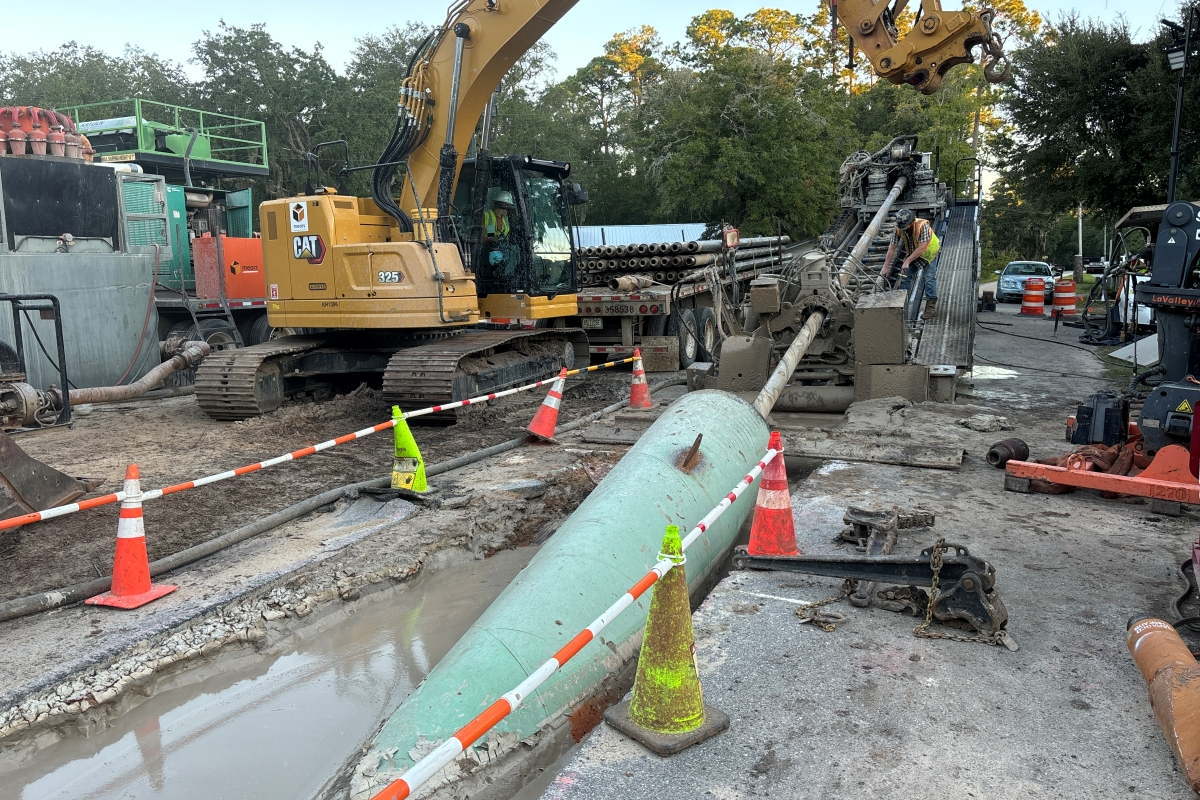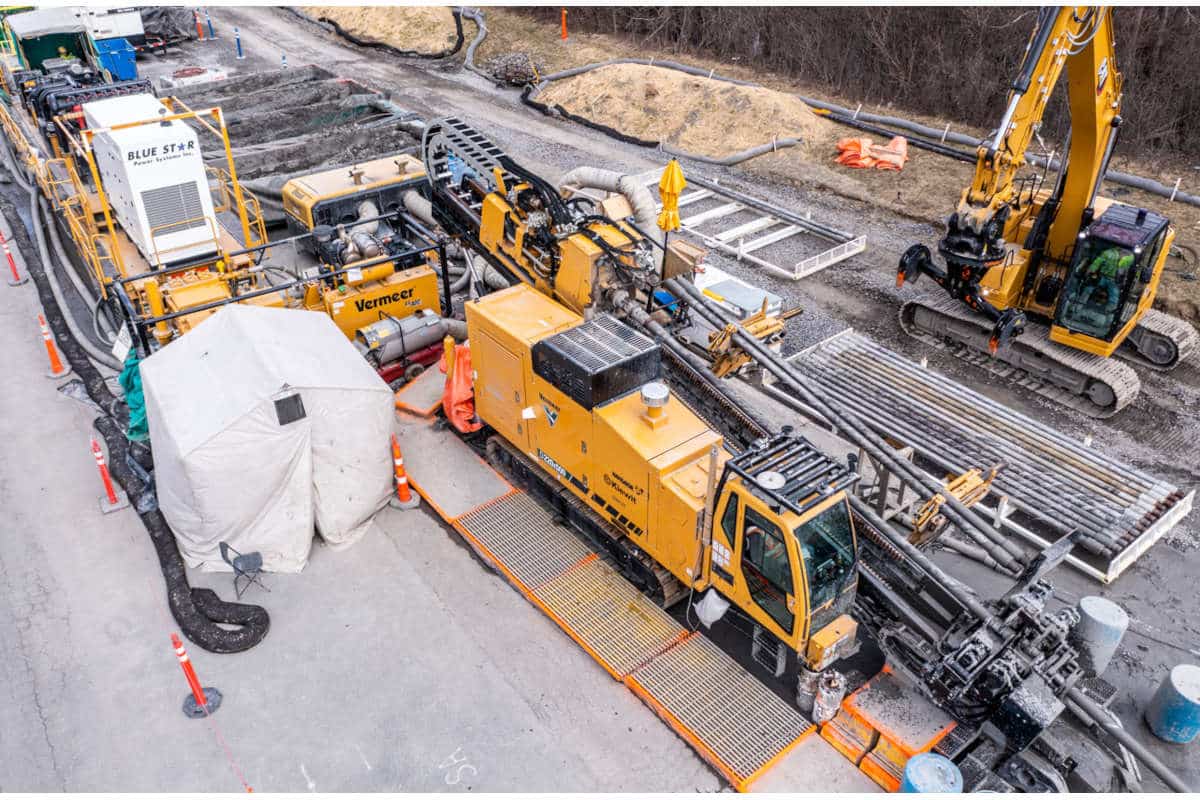
Engineering Q&A 2023: Spotlight on the Role Smaller to Midsize Trenchless Firms Play into Today’s Trenchless World
As we celebrate trenchless engineering with our December issue with our annual Top 50 Trenchless Engineering Firms Survey, attention is drawn to those larger, global firms that fall into the Top 10 whose reach is far and wide when it comes to trenchless work and personnel. We also wanted to shine some light on those firms in the survey whose revenue is smaller in scale but nonetheless complete an incredible amount of trenchless work.
We reached out to four trenchless firms for insight on today’s trenchless market, as well as perspective on the impact that smaller, midsize engineering firms have on trenchless work. Taking part in this special Engineering Q&A are (with placement in our survey in parenthesis):

Jason Lueke, Ph.D, P.Eng,
Associated Engineering (#37)

J. Keith Eysaman,
Rummel, Klepper & Kahl, LLP (#16)

Jeff Coffey,
DLZ (#20)

Todd Kilduff, P.E.,
Kilduff Underground Engineering Inc. (#43)
1. How would you describe the state and direction of the worldwide trenchless market today?
Keith Eysaman: Trenchless and semi-trenchless work and technology continues to grow and be utilized more in the utility market sectors to help avoid environmental and long-term community disturbance. Not only have we assisted our larger clients in the trenchless and semi-trenchless markets over the years, but we continue to try and incorporate smaller markets and clients (municipal and private sector) in the use of this technology. We try to implement trenchless and semi-trenchless technology on projects whenever the situation presents itself and makes sense to utilize.
Jeffrey Coffey: There is more demand in the trenchless marketplace than ever. Rehabilitation work has more alternative methods of evaluation, repair and replacement now to choose from. New utilities often have to be constructed trenchlessly in order to avoid surface impacts. This applies to rehabilitation projects, horizontal directional drilling (HDD), microtunneling and larger diameter tunneling.
Todd Kilduff: The trenchless market in the United States is healthy. There continues to be a need for new water and sewer pipeline projects as well as rehabilitation of aging infrastructure.
Jason Lueke: The focus of Associated Engineering’s trenchless practice is in the Canadian marketplace, from British Columbia to Ontario, specifically in the municipal conveyance and collection sectors. Our trenchless discipline continues to grow across Canada as clients value infrastructure solutions that are more sustainable, limit social and environmental impacts, and protects historically significant locations. Over the last few years, we have seen more of the techniques and equipment that have generally been limited to larger centers south of the border now being available in Canadian markets. Additionally, we have seen governments invest more money in infrastructure to facilitate growth, mitigate impacts of climate change, and increase service levels to established neighborhoods. Both influences have resulted in increasing opportunities for trenchless engineers and contractors in Canada.
2. Describe the role and impact that the midsize to smaller design firms play in the trenchless market.
Eysaman: Smaller firms such as RK&K that have significant trenchless experience are not only afforded the opportunity to work on large high-profile projects, but because we routinely work in smaller local markets, we are also able to assist the smaller municipal and private sector clients with the use of appropriate trenchless and semi-trenchless technologies to address their specific infrastructure needs.
Coffey: As a medium-size consulting firm with a wide variety of services, we can both support larger firms or lead the design of almost any type of project. We often bring smaller specialist firms onto a project team for services such as flow monitoring, CCTV, SUE and GPR. These firms provide a critical service to help get trenchless projects designed and built.
Kilduff: Many of the larger civil firms and owners are still not familiar with the services a specialty tunnel/trenchless design firm like ours provide. We help the civil firms that design the conveyance system with potential pump stations and WWTP handle some of the more challenging aspects of designing the pipeline. The water resources firms are good at designing the conveyance when the project is open cut but often are under qualified when their pipelines need to go trenchless. We can help the civil firms and owners when this happens.
Lueke: Being a smaller employee-owned firm allows us to be more responsive in pursuit of opportunities and provide services to clients that some of the larger firms may be unable. Additionally, our trenchless discipline is not siloed to one location or office, we collaboratively share work effectively across the company. Using a “one-office” approach, we bring the right people to the project or situation regardless of their location.
3. What challenges do smaller, specialized firms, such as yours, face vs the larger firms?
Eysaman: We do not believe that we have really viewed or considered this as a challenge. We have worked with several large engineering and construction firms both as prime consultants and as subconsultants on project teams to assist with trenchless and semi-trenchless needs. If we had to identify a challenge, it would be that as a smaller firm that typically services municipalities in the geographic regions we serve from our headquarters and branch offices, we do not often get opportunities to work outside of those areas or internationally.
Coffey: Being smaller than a nation-wide firm, we tend to stick to our market areas where we have an office and physical presence. We also have to team on large projects strategically in order to provide the best service possible to a specific client. The good news is we tend to be a bit more nimble than our larger competitors, and can often provide services to address more client specific needs in an efficient manner. I believe that staff from our different offices seem to be more readily available to assist on projects due to a strong “one-company” approach. Being smaller means that we still know each other and talk to each other, which makes it more fun to help each other out. I have seen large firms have multiple offices submit a proposal to the same client, which simply means they aren’t talking to each other.
Kilduff: The majority of the water and utility designers do not possess the expertise that we provide. As such many designs are put out to bid with constructability issues. We have been trying to help the firms that struggle with this aspect of the project but many are still not open to seeking or utilizing our specialty services. They see us running up project budgets that are already deemed not large enough for their component of the project. The reality is the owner pays for both design and construction and if they don’t bring us in on the front end they may very well have to pay more on the back end because of changes required during construction.
Lueke: We likely experience similar challenges that any smaller consulting company would have, including the extent of resources we can bring to a project, and the scope of services we are able to offer. Most of our trenchless engineers are home grown and are very experienced in HDD and microtunneling of new installations. However, we have limited expertise in the larger diameter segmental liner tunnels (greater than 3.5 m diameter) as there are few of these projects occurring in Canada. Alternatively, we see the application of microtunneling being far more common in the marketplace where we have designed the largest diameter microtunnel likely in North America at 3.5 m ID, and completed likely one of the longest microtunnel drives at 950 m.
4. How has the role of the trenchless engineer evolved over the last 20 years to where it is today?
Eysaman: Great question. The exciting part of being involved in the modern trenchless industry is the continual use of new and emerging technologies as well as changes associated with implementing existing trenchless and semi-trenchless methods and technologies. As trenchless professionals, we continue to grow and learn about new and/or changing technologies. This typically presents exciting opportunities. An example can be seen in the cured-in-place pipe (CIPP) lining industry and the use of new high-strength or environmentally friendly resins are achieving tremendous strengths with thinner liners as well as installation and curing methods such as UV-cure CIPP liners. Other examples are the use of pressure-rated CIPP lining technology or the use of carbon-fiber reinforced polymer composites. There are also new replacement pipe materials being implemented for semi-trenchless pipe bursting work. In the past, most trenchless lining work was mostly utilized to address sanitary sewers. Now we utilize this technology in pressure applications, potable water systems as well as stormwater rehabilitation applications. We have also been utilizing both CIPP and spray-in-place pipe (SIPP) technologies to structurally repair stream and roadway culverts on numerous roadway projects. We believe the emerging technology and use of this technology helps keep the interest of trenchless professionals in the industry, it is no longer just routine applying of the same products and technologies over and over.
Coffey: There are certainly more tools available now to complete evaluations and complete the construction work. There are numerous software options and GIS systems available to assist with condition assessments and project area prioritization. Products and installation techniques keep evolving and improving. A big part of our jobs is to try to keep up with all the advancements by attending conferences, reading periodicals, and encouraging young engineers to join professional organizations such as NASTT. In the end, all of these wonderful tools need to be used to answer the same question – what’s the least expensive, least risky, and least intrusive way to solve the problem?
Kilduff: Although we still have a long way to go, many municipalities and cities, especially larger ones have embraced what a tunnel/trenchless firm can offer. The role has evolved along with new and improved trenchless technologies and rehabilitation has exploded as a cost-effective means to meet municipal and city demands.
Lueke: Access to information and training are far more available today than it was 20 years ago. Today we see organizations like NASTT with the Good Practice manuals and courses, training opportunities including the HDD Academy and Microtunnelling Short Course, and Manuals of Practice from the American Society of Civil Engineers (ASCE) that are available to new and existing trenchless engineers. These are now the expected benchmarks in terms of knowledge and application. The role of the trenchless engineer today is more about using these established and proven good practices to meet project goals of sustainability, limiting impact, and looking for new applications of these established practices. I also think that today we have trenchless engineers who understand the risks and complications of trenchless designs and have undertaken training and education specific to trenchless design – that level of specialization may not have existed 20 years ago in most consulting firms.
5. How has the role of technology impacted the work that trenchless design firms do vs. even 10 years ago?
Eysaman: Trenchless technologies continue to improve and advance in the areas of both materials and installation techniques. For example, 10-years ago CIPP liners required a significantly thicker cross-section to achieve and accommodate the strength requirements for an installation. This often prevented longer or more complicated reaches from being lined or required on-site wet-outs of the materials due to the weights associated with transporting wet-out liners to the jobsite. Ten years ago, we also were not typically utilizing pressure-rated installations using CIPP liner technologies. We now routinely utilize pressure-rated CIPP and more exotic materials such as carbon-fiber reinforced polymer liners to address rehabilitation requirements in pressure applications. SIPP lining has also come a long way and material strengths allow this technology to routinely be used for full structural rehabilitation applications with limited disturbance footprints.
Coffey: One of the biggest changes I have seen over the last 10 years is that municipalities and larger cities especially have become very aware of the different types of technologies available. Some clients do much evaluation on their own, and we provide support as needed. Others want a full-service firm to complete all aspects of the project. More and more cities have become very familiar with construction / installers in their geographic area. Talking to installers during design is an invaluable step to help achieve project success.
Kilduff: Trenchless technology services are all about understanding the technology, the ground conditions and how the means and methods will be compatible with those ground conditions.
6. What are your thoughts on the future of smaller, specialized trenchless design firms?
Eysaman: We see smaller firms as another mechanism to bring this great technology to more clients. Typically, smaller engineering firms tend to work with more local municipalities and private sector clients that do not often get the benefits of implementing these technologies. Smaller design firms and contractors that implement trenchless technologies get the opportunity to work with these smaller clients since many of the firms also work on other municipal based projects and contracts with these clients and that relationship allows smaller firms to bring trenchless technologies to these clients. Also, as products and application technologies in the trenchless industry become more cost effective in addressing aging infrastructure needs, the use of this technology and materials enhancements will continue to grow. This also allows more potential for job growth both in design as well as in the construction industry. Being a trenchless professional can be an exciting career choice.
Coffey: I believe that smaller firms and specialist firms provide services that are in very high demand right now, and this will very likely continue in the future. As more and more infrastructure gets built, maintenance needs will continue to increase. As long as the populations are increasing, the demand for water and sewer services increases in step. Service providers have to keep doing everything they can to keep up, while project funding is always an issue.
Kilduff: I think there will be a continuing and expanding role for trenchless design firms. Many larger architecure and engineering (A/E) firms have expanded to include these services but larger firms can have trouble keeping trenchless engineers busy. Smaller boutique firms like ours see a lot of different types of projects which may give us some advantages to A/E firms who may not get the depth and breadth of projects and ground conditions that a company like ours sees.
Lueke: Trenchless at Associated Engineering is a specialized discipline within the larger multidiscipline organization. This provides us with resources and internal expertise to assess non-typical situations including unique loadings and stresses on pipe with our structural engineers, obtaining environmental permitting and approvals, conducting hydraulic modelling and analysis, and operations-related issues. While there are several trenchless “only” firms – having the additional benefits of the other disciplines within Associated Engineering allows us to provide a higher level of service, develop creative solutions, and more easily adapt to potential changed conditions or scope within a project engagement.
Sharon M. Bueno is the editor of Trenchless Technology.




